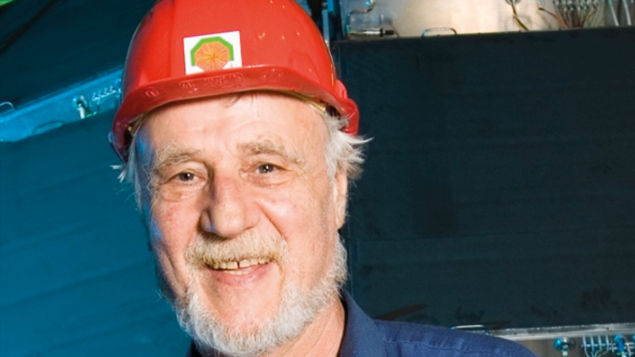
François Piuz, a talented and passionate CERN physicist since 1968 who was leader of several projects, passed away on 21 July 2022 aged 85. Throughout his distinguished career, François worked at the forefront of particle detectors. With his many talents, he made significant contributions to topics ranging from the fundamental principles of detector operation to the innovative technologies required to deploy detectors in large experiments.
François began his scientific journey in the early 1970s as a notable member of the team that transformed the invention of the Nobel Prize-winning multi-wire proportional chamber (MWPC) into the system of 50,000 wires for the Split-Field Magnet facility at the CERN Intersecting Storage Rings. At this time, he wanted to understand the functioning of these new detectors at the fundamental, microscopic level. His work on the concept of “ionisation clusters” in the MWPC became a classic and was crucial to the development of particle identification based on multiple measurements of ionisation. One spectacular use of this approach is the X-ray photon detection system of the ALICE experiment’s Transition Radiation Detector at the LHC. Cluster counting is also a candidate technique for high-granularity dE/dx measurements at future colliders.
Another highlight that came from his insightful understanding was the development of a novel drift chamber topology capable of measuring particles with exceptional spatial resolution and multi-track separation, as required for the SPS experiments in the 1980s. During this time, he renewed his interest in particle identification and contributed to pioneering studies demonstrating the outstanding potential of solid cesium iodide (CsI) photocathodes for the detection of Cherenkov photons, which would prove so fruitful in the ALICE experiment’s HMPID (High Momentum Particle Identification Detector) RICH detector.
In 1992 François was one of the main proponents, and the co-spokesperson, of the RD26 project, which, in six years, had successfully developed the technology to produce large-area (up to 0.3 m2) CsI-based gaseous photon detectors for use in RICH systems operated in heavy-ion collision experiments. This project represented the summit of his outstanding scientific career, in which he coupled his unique expertise in gaseous detectors, developed while working with Charpak, with a passion for photography and, therefore, photon detection. Such technology allowed the construction of the largest CsI-RICH detector ever built and rapidly found applications in other experiments, including NA44 and COMPASS at CERN, HADES at GSI and the Hall A experiment at JLab.
François was a member of the ALICE collaboration from its first days and led the HMPID project until 2000. After his retirement in 2002, he continued to actively participate in the construction, installation and operation of the HMPID, which, nearly two decades after its construction, continues to operate at higher rates for LHC Run 3. François was also involved in coordinating test-beam activities, which were instrumental to the R&D for all ALICE detectors.
François’s remarkable knowledge and ability to envision solutions to complex problems were key to the success of the many detector projects that he worked on. He was always interested in new ideas and ready to provide help and support to colleagues. These qualities, combined with a playful sense of humour, made François a very friendly and charismatic personality. He will be missed by many, but will always be remembered for his great qualities, both as a physicist and as a person, by those who were fortunate enough to have worked closely with him.








